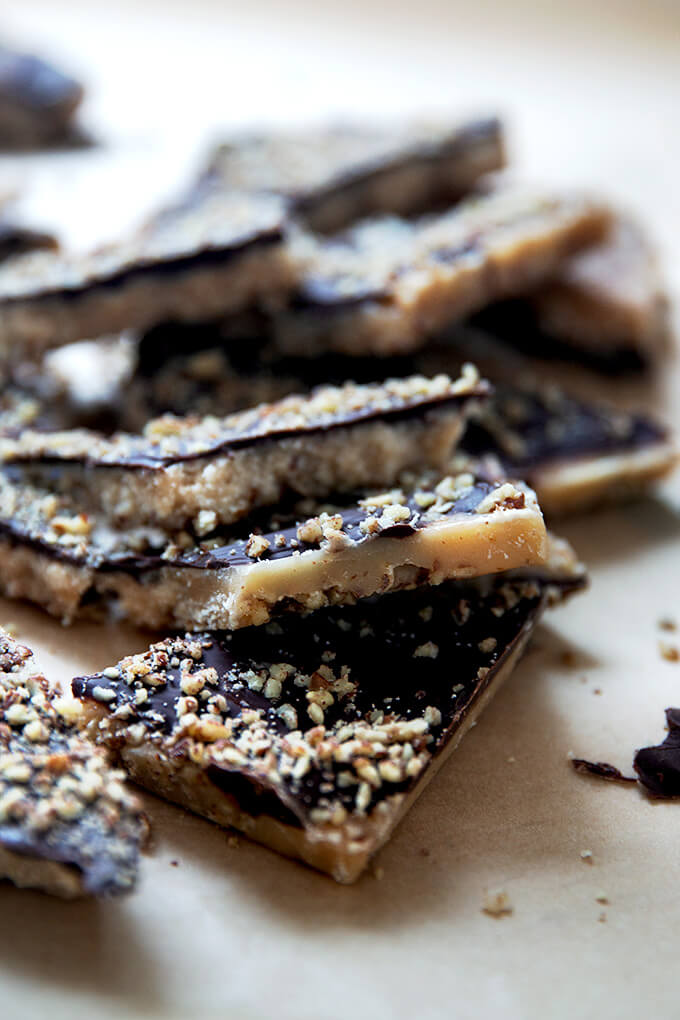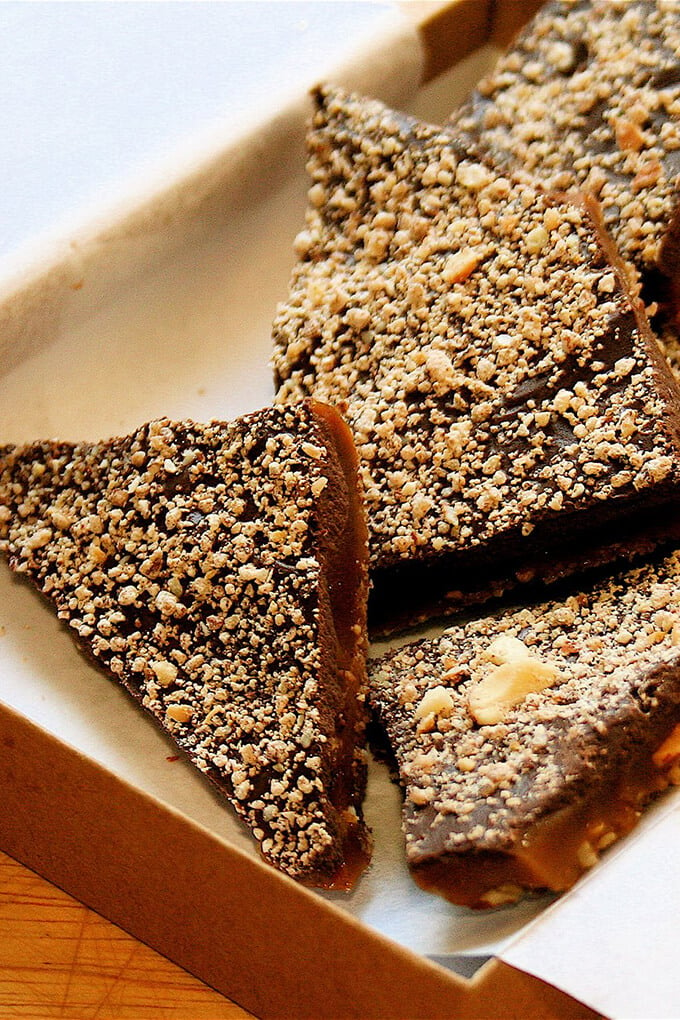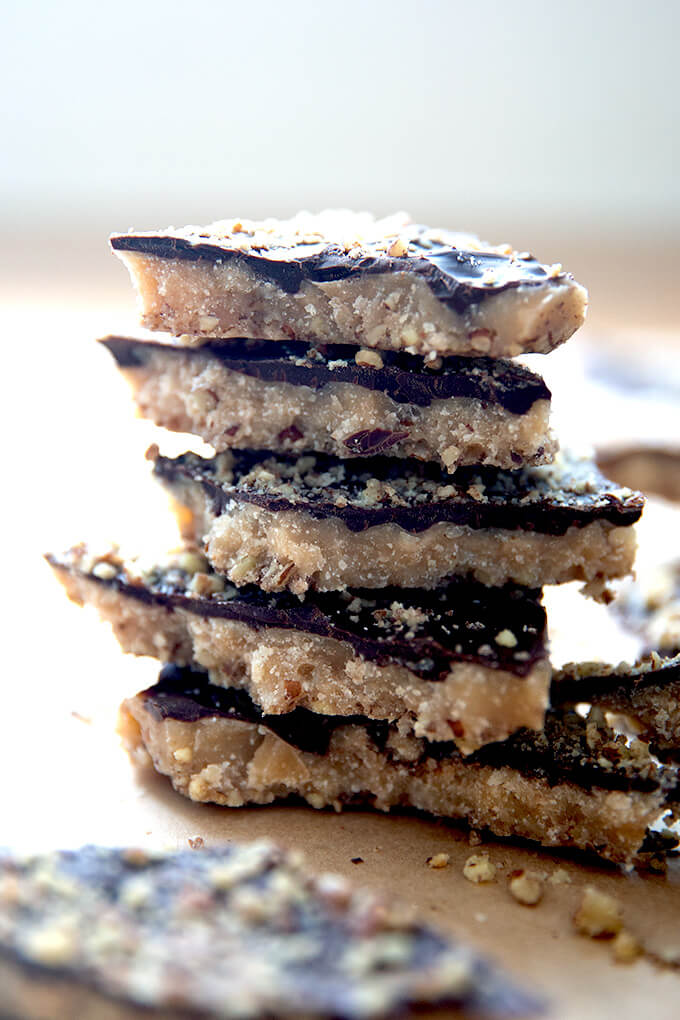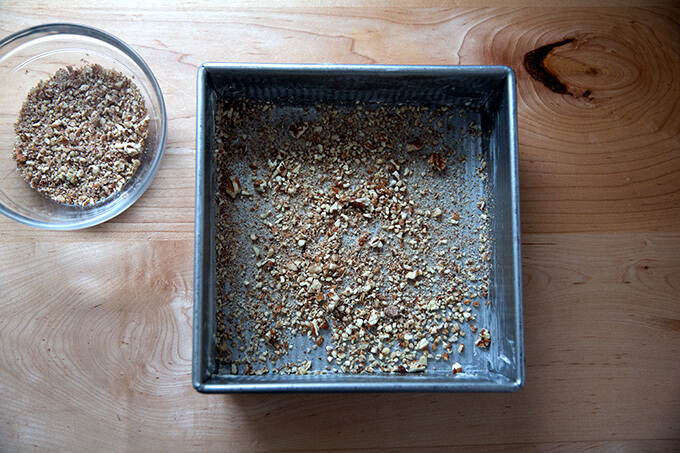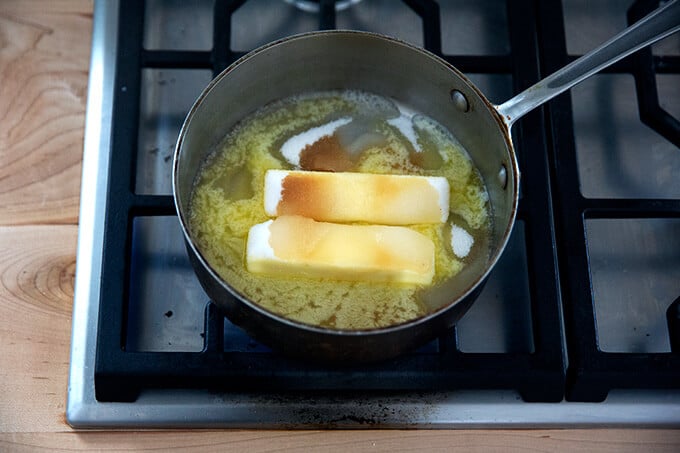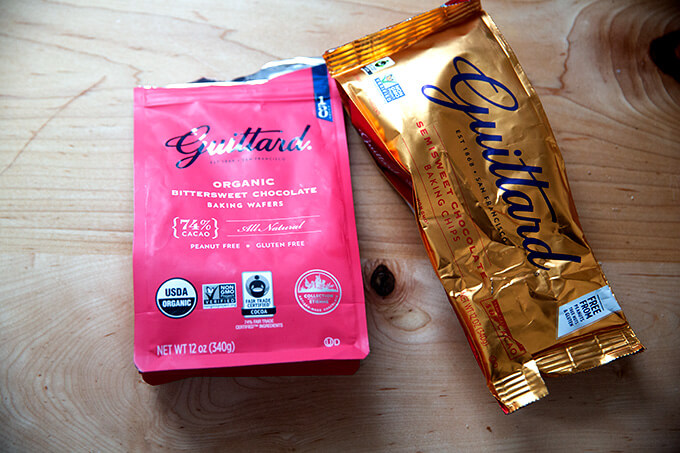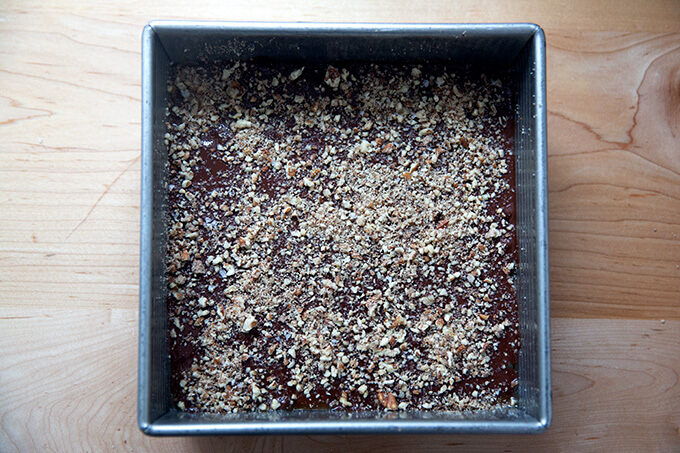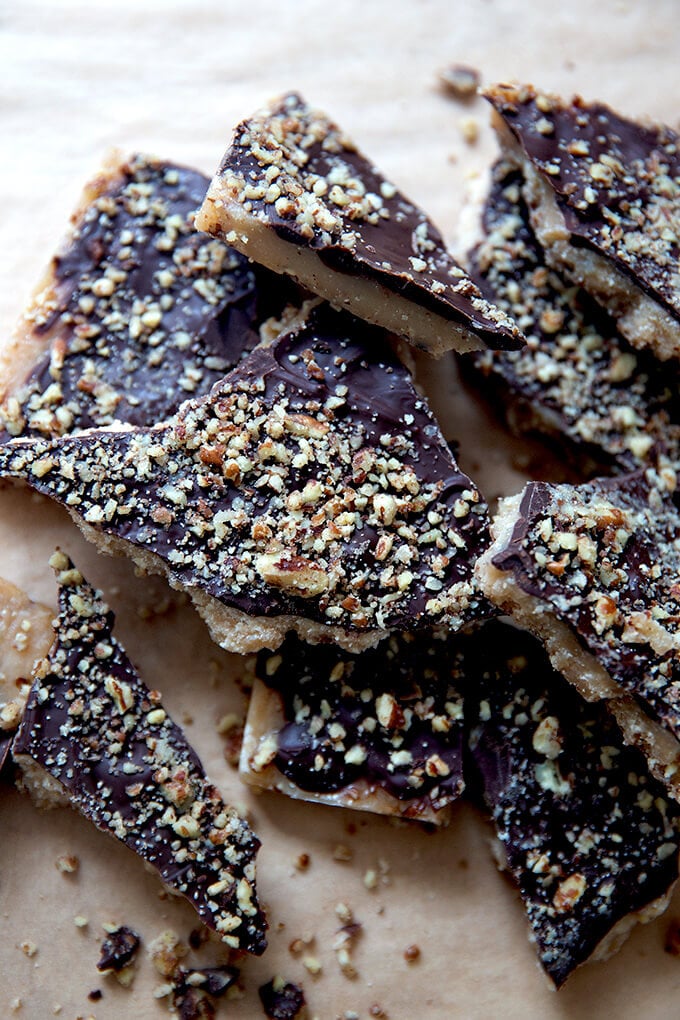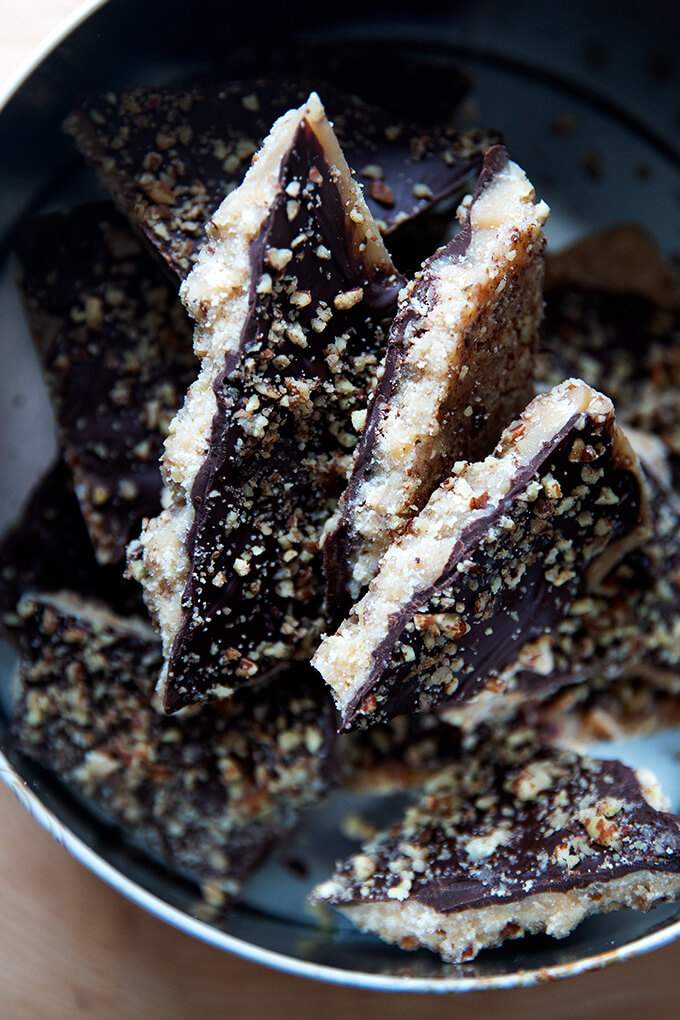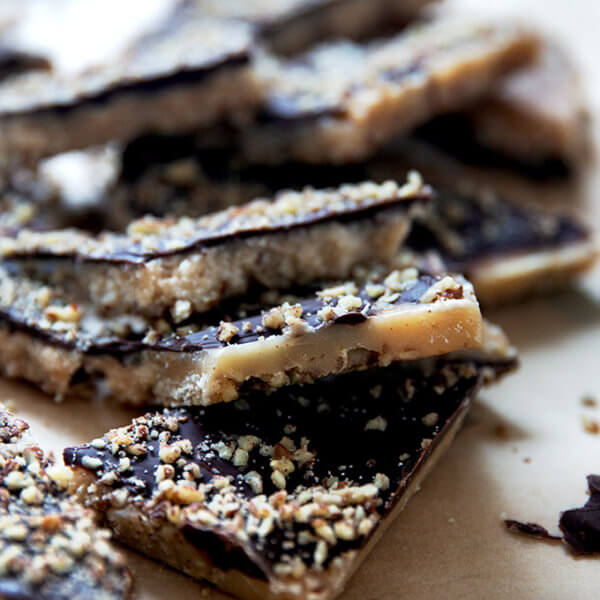This recipe, submitted by my friend Laura Daley, won The Philadelphia Bulletin’s 2007 “Annual Edible Gift Recipe Contest.” It’s buttery and chocolaty, sweet and salty, a festive treat to add to your holiday desserts repertoire. There is one trick to making this recipe: cooking the sugar until it reaches the hard-ball stage or, in my experience, until it gets just beyond the hard-ball stage.
What is the hard-ball stage?
The hard-ball stage refers to the stage sugar reaches when it is heated to 250º – 266ºF (121 – 130ºC), but for this recipe you’ll want to cook it a little longer. You, of course, can use a candy thermometer to test for this stage, but Laura uses a different method: she has you drop a small spoonful of the cooked sugar into a glass of cold water. If the syrup forms a ball — and if you press it between your fingers and it holds its shape — the sugar is in the hard-ball stage. If you are comfortable cooking sugar and gauging this sort of stage, feel proud — it’s not easy. The more I make this toffee, the more I find myself relying on my Thermapen — so fast and so accurate — to assess when the sugar-butter mixture is done. I also am finding that cooking the sugar a bit beyond the hard-ball stage, more to like 285ºF-290ºF, is best. Note: the texture of this finished toffee is almost sandy — it melts in your mouth as opposed to sticks to your molars. It doesn’t snap sharply when it breaks, but rather crumbles. I find the texture to be quite nice, but if you are looking for more of that crisp, snappy caramel texture, you should cook your butter-sugar mixture till it gets beyond 300ºF.
Chill It
There is one other critical step to ensuring this toffee turns out well for you: chill the assembled toffee in the fridge for at least two hours before breaking it into chards. Chilling it allows the butter-sugar layer to firm up and solidify. Once it is solid, you can break it into shards and …
…Gift It
This toffee, as Laura notes in the recipe, makes a great gift for the holidays. Several years ago, I purchased a case of 100 brown stationery boxes from Uline. Although this large case of boxes takes up nearly half our storage space in the basement, every holiday season I am so happy to have these clear-top boxes on hand. I have packaged biscotti and chocolate truffles in them for the past two years, and now I will pack Daley Toffee in them as well. For a nice presentation, use parchment paper as a base inside the box, wrap the box with a ribbon, and tie on a simple tag.
How to Make Toffee: A Step-by-Step Guide
Sprinkle ground pecans into a buttered 9×9-inch pan. I love this USA Pan: Bring butter, sugar, water, and vanilla to a simmer in a saucepan stovetop: Have your Thermapen or candy thermometer nearby. You want to remove the mixture when it reaches 285ºF – 290ºF or when it looks caramel-colored. Reference the video for guidance. Pour it over your prepared pan: Let stand 2 minutes; then sprinkle chocolate chips over top. Let stand another 2 minutes; then spread into an even layer: You can use dark or milk chocolate here — whatever you like best: Sprinkle more ground pecans over top and a pinch of sea salt if you wish: Transfer to the fridge for at least 2 hours before turning the toffee out onto a sheet of parchment paper and breaking it into shards. 5 from 4 reviews Laura’s notes: This recipe makes a great holiday gift for those with a sweet tooth! It keeps up to 2 weeks if you put it in an airtight container. Chocolate: I’ve used both semi-sweet (46% cacao) and dark chocolate (74% cacao), and I like both. Obviously, when semi-sweet chocolate is used, the toffee comes out sweeter. Pan Size: You can also use a 9×13-inch pan if you’d prefer a thinner version — in which case increase nuts to 1 cup.
